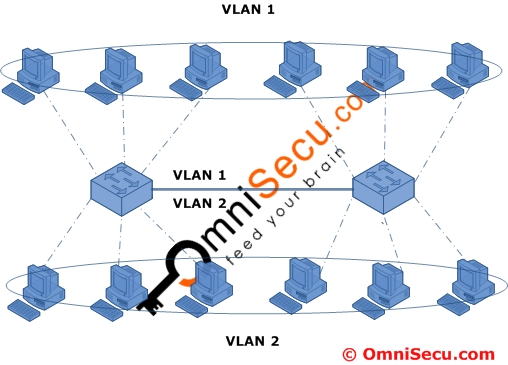Types of VLAN connection links - Trunk Links and Access Links
There are two types of VLAN connection links and they are Access link and Trunk link.
The difference between access link and trunk link are given below.
• Access link: An access link is a link that is part of only one VLAN, and normally access links are for end devices. Any device attached to an access link is unaware of a VLAN membership. An access-link connection can understand only standard Ethernet frames. Switches remove any VLAN information from the frame before it is sent to an access-link device.
• Trunk link: A Trunk link can carry multiple VLAN traffic and normally a trunk link is used to connect switches to other switches or to routers. To identify the VLAN that a frame belongs to, Cisco switches support different identification techniques (VLAN Frame tagging). Our focus for CCNA Routing and Switching examination is on IEEE 802.1Q.
A trunk link is not assigned to a specific VLAN. Many VLAN traffic can be transported between switches using a single physical trunk link.
Following picture shows the difference between access and trunk links.

The dotted lines in above picture are access links and solid line connecting two switches together is a trunk link. The access links are part of only one VLAN and carry traffic to only the end devices connected to that particular VLAN. But a trunk link is used to connect switches to other switches or to routers and can carry traffic from multiple VLANs.
Cisco supports trunk links on both Fast Ethernet and Gigabit Ethernet ports.